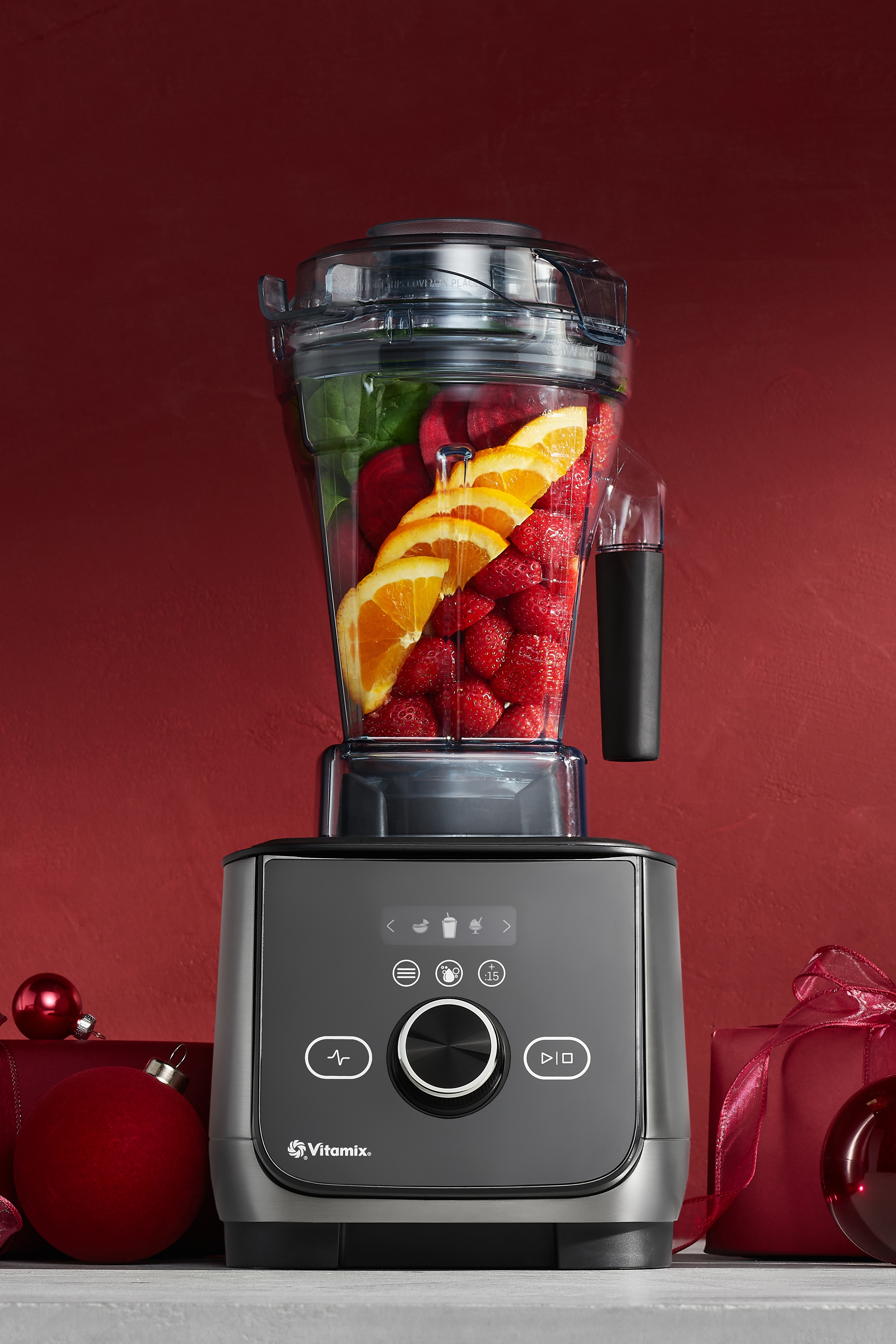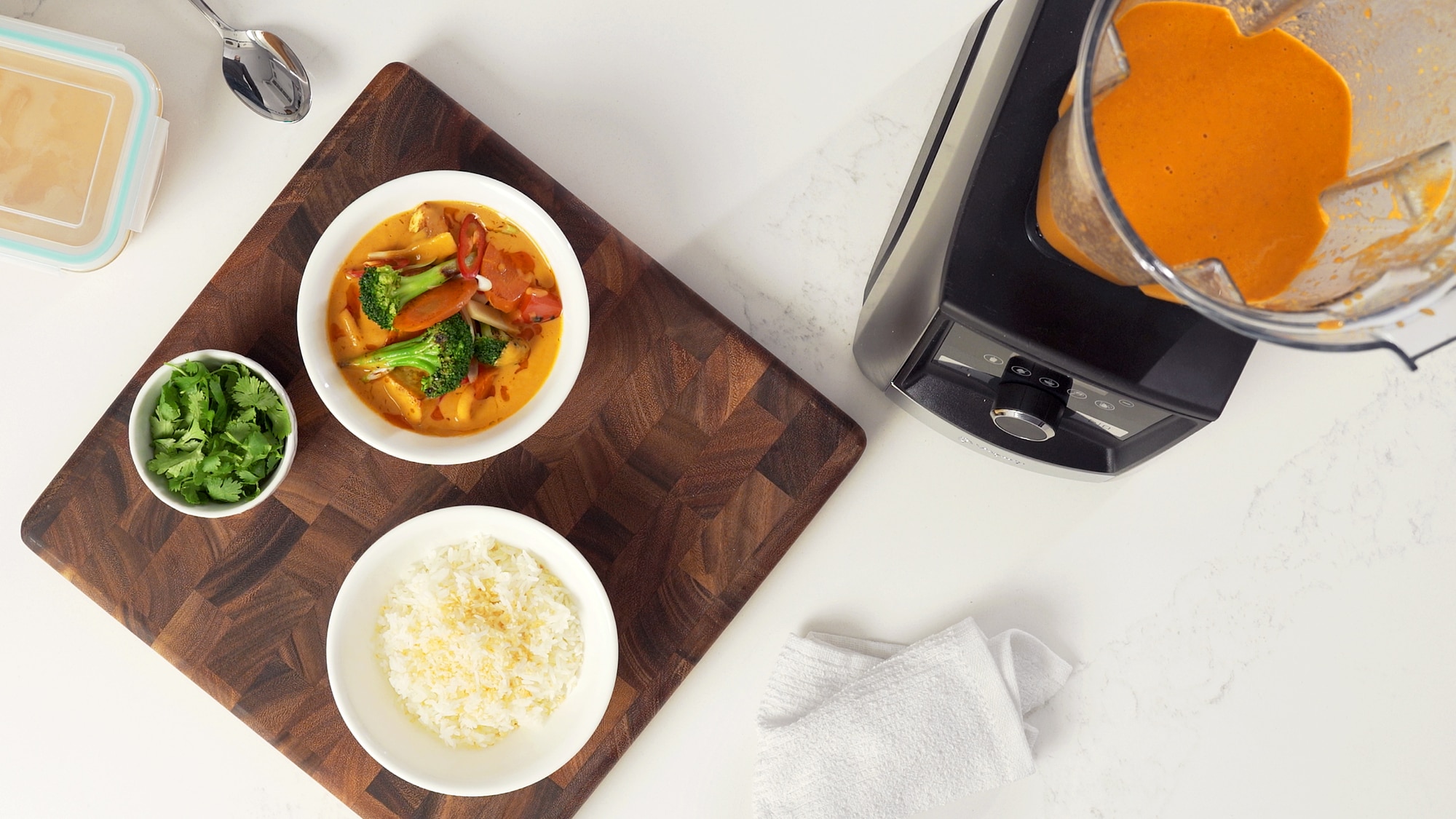Meal prep can be a thing of beauty for busy families – it saves time, allows schedule flexibility and promotes healthy eating. But you need the right tools (and a bit of background) to make meal prep work – and ensure the process is sustainable and enjoyable. Read on to begin meal prep with panache.
Productive Prep
You don’t need a standard blender, a chopper, a grater, a food processor, a ricer, a grinder and a full knife set to puree, chop, mince and grate items for meals. Your high-performance Vitamix blender can quickly break down large chunks of fruit and veggies in many different textures; smooth purees are just the beginning.
For a quick dice on ingredients like onion, garlic, carrot – or to grate hard cheeses like parmesan – simply drop the ingredients through the Vitamix lid plug opening into the spinning blades. Use any Vitamix blender to quickly mince or rice large amounts of veggies like cauliflower: break the veggie into large chunks, place in the blending container, and fill it with enough water so that the pieces are floating above the blades. Pulse the blender until the desired texture is reached, strain out the water, and you’re done. Prep perfected!
Knowledge is Power
When mapping out your weekly meal prep, it helps to have a sense of how long items last in the fridge or freezer, and which items simply shouldn’t be frozen. It’s safe to say most cooked items, including fish, meat, poultry, pizza or soups, last three days (sometimes more) in the fridge, if it’s set to 40 degrees Fahrenheit or cooler. Hard-boiled eggs will last a full week. In the freezer, at zero degrees Fahrenheit, items last at least a month – and in many cases, much longer – before they start to lose flavor.
Can you throw any food item in the freezer? Technically, yes; but ideally, no. Milk, sour cream, yogurt, cream-based soups and sauces, plus certain varieties of cheese, change texture in the freezer … and not for the better. Potatoes and potato-based soups and casseroles range in texture from lumpy to gummy when frozen. Salad greens, cucumbers, fresh tomatoes and fresh herbs go from crispy to soggy in the freezing and thawing process. Even noodles and rice could become mushy when thawed … so prep sauces and soups sans starch and add fresh pasta or grains when you’re ready to eat.
Storage: Solved
Before you begin meal prep, make sure to dedicate appropriate fridge and freezer space – and secure the proper storage. Reusable glass food storage containers with tight-fitting lids are the easiest, and most eco-friendly, option for meal storage. When you’re ready to enjoy, simply remove from the fridge or freezer and defrost/heat items right in the container. This method utilizes fewer dishes (meaning less dishwashing), but also creates less mess and less waste – a win for you and for the earth.
If you have a Vitamix Ascent Series machine, Blending Cups and Blending Bowls also allow for time and labor savings. Blend your sauce, dip, spread, dressing or drink directly in your chosen container, seal and chill until you’re ready to consume. The containers are dishwasher safe, so cleanup is a snap.
Before you store, consider this: a great way to save time is to make double recipes of your favorite items and freeze for later. Just be sure to leave extra space in the freezer if you want to take things two weeks (or more) at a time.
Once you’ve meal prepped for a month or so, you’ll feel like an old pro. Looking for more meal prep inspiration? Check out “Why Meal Prep with Vitamix?” or share your meal prep secrets using #MyVitamix.
Related Articles

Parents Propel Healthy School Breakfast Initiative with Help of Vitamix Machines
Palermo public schools use Vitamix machines to help achieve versatile and healthy breakfast options.

Plant-Based Sunday Meal Prep
Start off your week right with these easy plant-based recipes.

Vegetables and Herbs: How to Buy, Prepare, Store and Cook
Here are a few quick tips on how to buy, prepare, store and cook with fresh vegetables and herbs.



